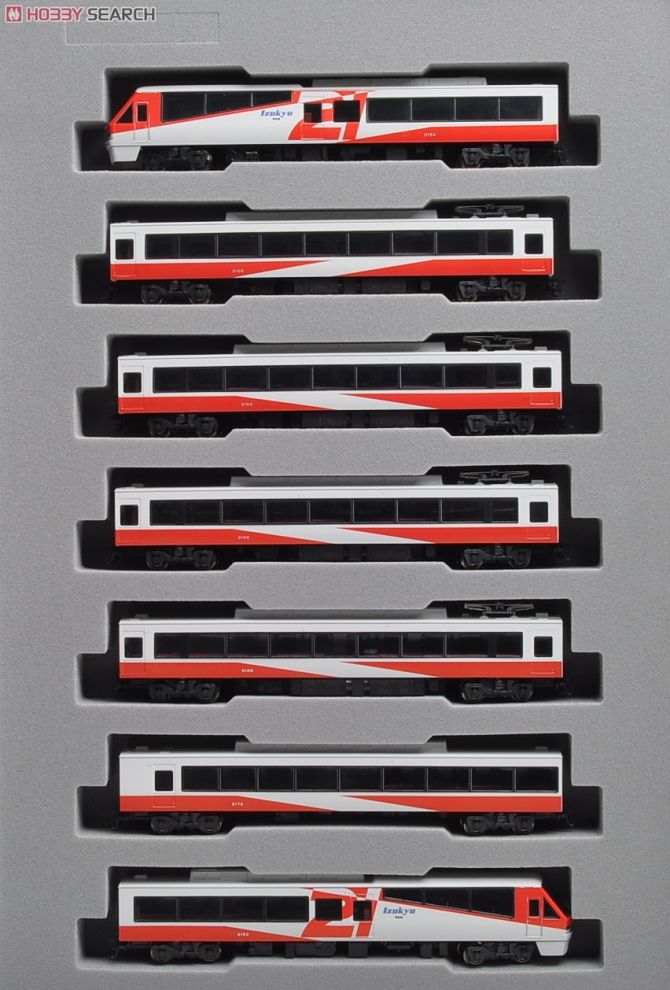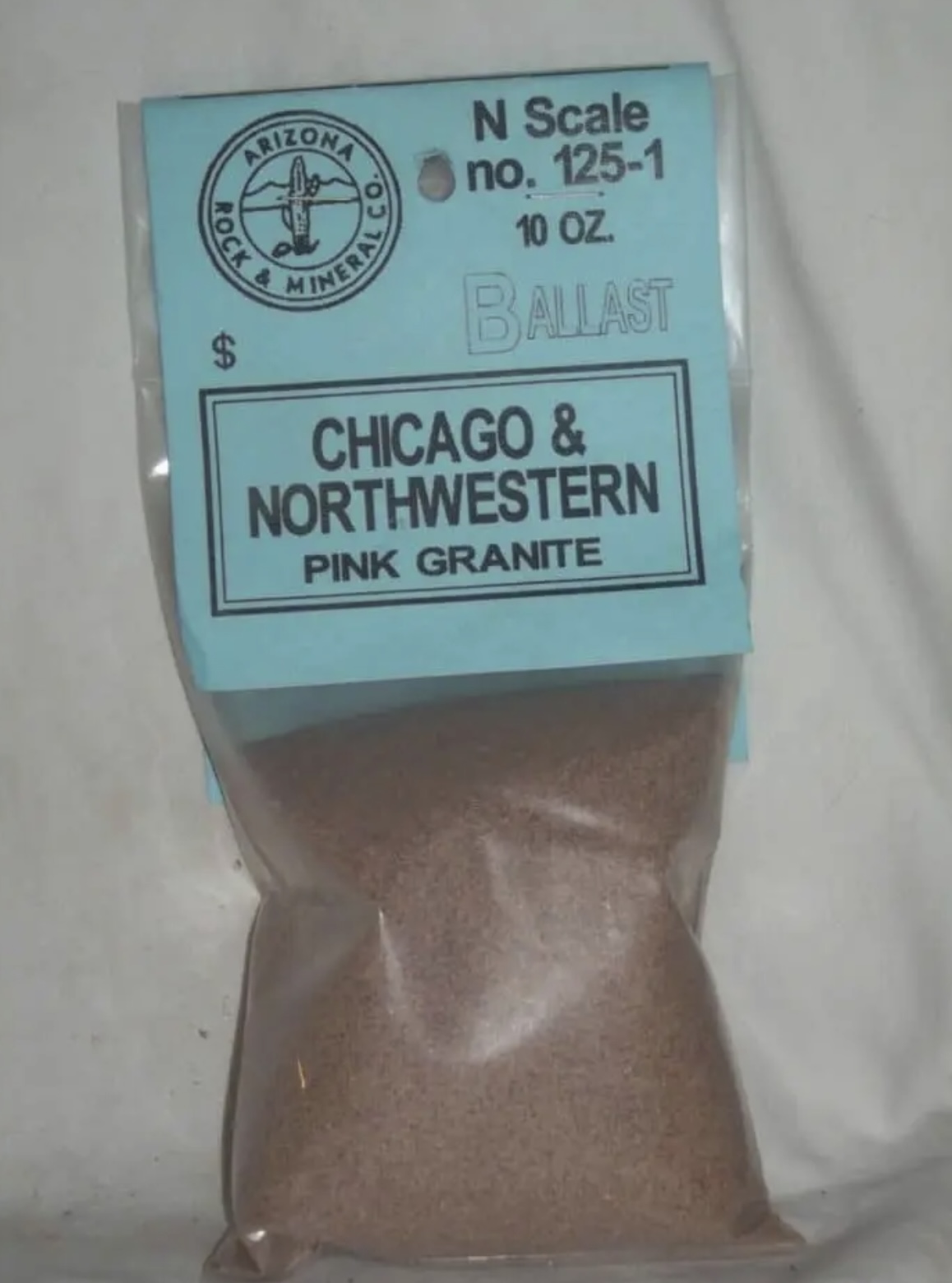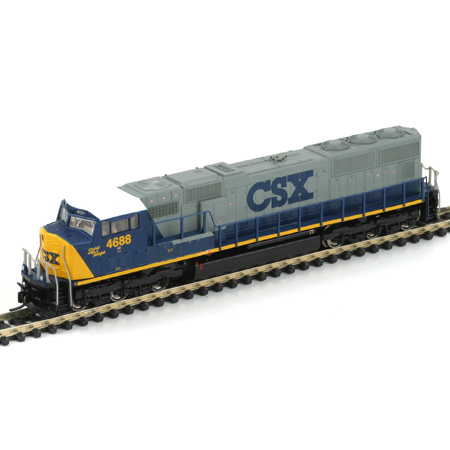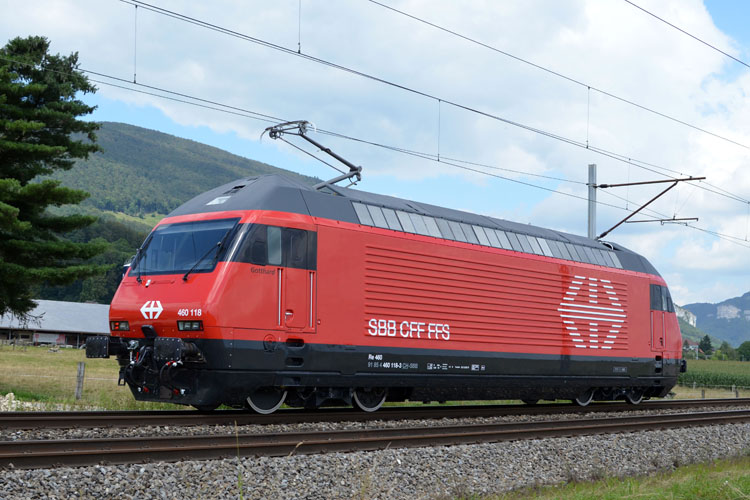Minitrix - 16763 - Locomotive, Electric, Re 460 - SBB CFF FFS - 460 080-5
| Stock Number | 16763 |
| Original Retail Price | 299.99€ |
| Brand | Minitrix |
| Manufacturer | Minitrix |
| Body Style | Minitrix Electric Locomotive Re 460 |
| Prototype Vehicle | Locomotive, Electric, Re 460 (Details) |
| Road or Company Name | SBB CFF FFS (Details) |
| Reporting Marks | SBB |
| Road or Reporting Number | 460 080-5 |
| Paint Color(s) | Green and Black |
| Print Color(s) | White |
| Additional Markings/Slogan | Migros |
| Coupler Type | Rapido Hook NEM Standard Pocket |
| Wheel Type | Chemically Blackened Metal |
| Wheel Profile | Small Flange (Low Profile) |
| DCC Readiness | DC/DCC Dual Mode Decoder w/Sound |
| Release Date | 2016-01-01 |
| Item Category | Locomotives |
| Model Type | Electric |
| Model Subtype | Re |
| Model Variety | 460 |
| Prototype Region | Europe |
| Prototype Era | EU Epoch V (1985 - 2000) |
| Years Produced | 1991–1996 |
| Scale | 1/160 |
Specific Item Information:
The locomotive has a built-in digital decoder and sound generator for operation with the formats DCC, Selectrix, and Selectrix 2. It also has a motor with a flywheel. 4 axles powered. Traction tires. The headlights and marker lights change over with the direction of travel. Warm white LEDs are used for the lighting. The headlights, marker lights, and cab lighting can be controlled digitally. The locomotive has NEM coupler pockets. Length over the buffers 115 mm / 4-1/2".
DCC Information:
Accepts NEM 651 Decoder.
Prototype History:
The Re 460 (popularly known as the Lok 2000) is a 6,100 kW (8,180 hp) four-axle electric locomotive of the Swiss Federal Railways (SBB-CFF-FFS). Upon their entry into service in the early 1990s, they replaced the Ae 3/6I, Ae 4/7 and Re 4/4I series units, and displaced many of the Re 4/4II series into lesser duties.
A total of 121 Re 460 have been built between 1991 and 1996.
The series was introduced as part of the Rail 2000 project, a massive project to modernise and improve capacity on Switzerland's railways. While originally designed as a multipurpose locomotive, they are now used for passenger services only, often in conjunction with the IC 2000 double decker trains (often used to pull InterCity and InterRegio trains in German and French language areas). Their freight role has been assumed by Re 482s. They are maintained at Yverdon..
The Re 460 are regularly used as billboards for advertising campaigns of all sorts.
From Wikipedia
A total of 121 Re 460 have been built between 1991 and 1996.
The series was introduced as part of the Rail 2000 project, a massive project to modernise and improve capacity on Switzerland's railways. While originally designed as a multipurpose locomotive, they are now used for passenger services only, often in conjunction with the IC 2000 double decker trains (often used to pull InterCity and InterRegio trains in German and French language areas). Their freight role has been assumed by Re 482s. They are maintained at Yverdon..
The Re 460 are regularly used as billboards for advertising campaigns of all sorts.
From Wikipedia
Road Name History:
Swiss Federal Railways (German: Schweizerische Bundesbahnen (SBB), French: Chemins de fer fédéraux suisses (CFF), Italian: Ferrovie federali svizzere (FFS)) is the national railway company of Switzerland. It is usually referred to by the initials of its German, French and Italian names, either concatenated as SBB CFF FFS, or used separately.
The company is headquartered in Bern.
Read more on Wikipedia.
The company is headquartered in Bern.
Read more on Wikipedia.
Brand/Importer Information:
Trix is a German company that originally made Trix metal construction sets. one of its co-founders was Stephan Bing, the son of the pioneer toy-maker industrialist Ignaz Bing. In 1935 the company began producing the electrically powered model trains that it became famous for, under the Trix Express label. Prior to the outbreak of World War II the Trix company produced a small range of fairly unrealistic AC powered three rail models running at 14 volts.
N gauge models under the Minitrix brand were made from the late 1960s mostly of European prototypes (German and British primarily). North American prototypes were also manufactured and marketed under the Aurora "Postage Stamp" brand; later these items were sold under the American Tortoise, Model Power and Con-Cor brands. Trix sometimes utilized North American consultants to aid in the design of this portion of the product line. The "Hornby Minitrix' brand was used in the 1980s for a short lived range of British outline models using the earlier product tooling.
Trix's owner in the 1980s and 1990s was Mangold, which went bankrupt in the late 1990s and Märklin purchased the assets in January 1997. In part, this purchase was a reflection of Märklin's need for added production capacity; Trix had been manufacturing certain items for Märklin in previous years. The purchase was also in response to the earlier purchase of the Karl Arnold company by the Italian company Rivarossi; Märklin were very keen to take over Trix market share in 2-rail H0 and especially Minitrix, until then Märklin had not marketed N gauge models. In 2003, Märklin introduced its first N gauge models under the well established Minitrix brand. A number Märklin H0 scale three-rail AC locomotives have also been introduced in two-rail DC versions under the Trix logo and many models are shared between the two brands.
From Wikipedia
N gauge models under the Minitrix brand were made from the late 1960s mostly of European prototypes (German and British primarily). North American prototypes were also manufactured and marketed under the Aurora "Postage Stamp" brand; later these items were sold under the American Tortoise, Model Power and Con-Cor brands. Trix sometimes utilized North American consultants to aid in the design of this portion of the product line. The "Hornby Minitrix' brand was used in the 1980s for a short lived range of British outline models using the earlier product tooling.
Trix's owner in the 1980s and 1990s was Mangold, which went bankrupt in the late 1990s and Märklin purchased the assets in January 1997. In part, this purchase was a reflection of Märklin's need for added production capacity; Trix had been manufacturing certain items for Märklin in previous years. The purchase was also in response to the earlier purchase of the Karl Arnold company by the Italian company Rivarossi; Märklin were very keen to take over Trix market share in 2-rail H0 and especially Minitrix, until then Märklin had not marketed N gauge models. In 2003, Märklin introduced its first N gauge models under the well established Minitrix brand. A number Märklin H0 scale three-rail AC locomotives have also been introduced in two-rail DC versions under the Trix logo and many models are shared between the two brands.
From Wikipedia
Item created by: gdm
on 2019-05-12 16:06:57
If you see errors or missing data in this entry, please feel free to log in and edit it. Anyone with a Gmail account can log in instantly.
If you see errors or missing data in this entry, please feel free to log in and edit it. Anyone with a Gmail account can log in instantly.











